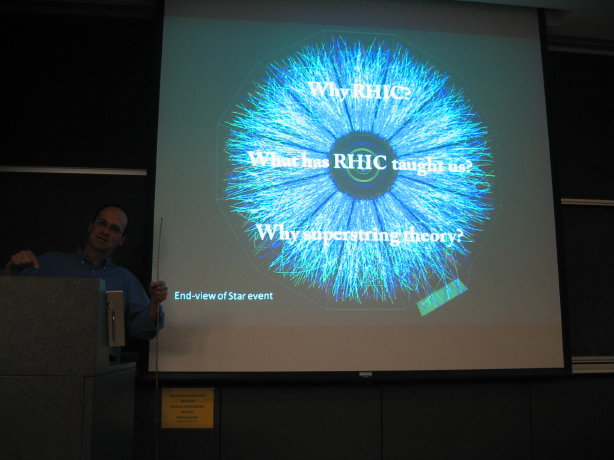Here’s Rob Myers in action, giving Monday’s excellent departmental colloquium, entitled “Quark Soup Al Dente: Applied String Theory”:

Here was his abstract:
In recent years, experiments at the Relativistic Heavy Ion Collider have discovered an exotic new state of matter known as the quark-gluon plasma. Simple theoretical considerations suggested that this plasma would behave like an ideal gas, however, the experiments show that it actually behaves very much like an ideal liquid. Thus the standard theoretical tools, such as perturbation theory and lattice gauge theory, are poorly suited to understand this new phase. However, recent progress in superstring theory has provided us with a theoretical laboratory for studying very similar systems of strongly interacting hot non-abelian plasmas. This surprising new perspective extracts the fluid properties of the plasma from physical processes in a black hole spacetime. At present, this approach seems to provide some of the best tools which theoretical physicists have to understand the heavy ion collisions at RHIC.
For a very good blog post on this issue, see Bee and Stefan’s post at Backreaction.
It was really excellent to see Rob and spend some time with him at dinner afterwards and at lunch the next day with my students. We got to chat over a nice Tapas-style meal and catch up a bit on what each other has been up to (both in and out of physics – Rob is one of my most long standing friends and collaborators in the field), and he even gave us a seminar on Tuesday before leaving.
Now, here’s a physics question for you: […] Click to continue reading this post →




